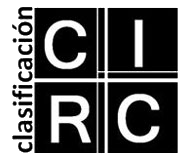Distinctions in film: philosophical dualism in light of the Peircean sign
DOI:
https://doi.org/10.24215/16696581e160Keywords:
cinema and communication, hylemorphism, Charles Sanders Peirce, Jorge Acha, representation, Adrian J. IvakhivAbstract
This essay tackles the traditional dualism in philosophy and the arts between form and matter, focusing in the division of the sign between signifier and signified. This bifurcation subscribes to representationalism which postulates the ontological divide between the world-in-itself and the mental images we make from it. Hence it is important to recover the Peircean sign because, unlike the structuralist sign or Ernst Cassirer’s sign/symbol distinction, it reintroduces the image in all its materiality, never reduced to a simple psychologism (and much less to linguistics). Walter Benjamin’s allegorical sign follows the same path. Therefore, in the end, we offer a cinematographic example: we take a couple of sequences from Jorge Acha’s feature film Habeas Corpus (1986) and think about the implications of the peircean conception of the sign developed here in relation to avant-garde art and its links to a process-relational or communicational ontology.
Downloads
References
Acha, J. L. (1986). Habeas Corpus [largometraje]. Argentina.
Barad, K. (2007). Meeting the Universe Halfway: Quantum Physics and the Entanglement of Matter and Meaning. Durham y Londres: Duke University Press.
Benjamin, W. (2012). El origen del Trauerspiel alemán. Buenos Aires: Gorla.
Bertazza, J. P. (2017). El pez y los pecados en Habeas Corpus. En Bernstein, G. (ed.). Jorge Acha. Una eztétyka sudaka. Buenos Aires: Ítaca.
Cassirer, E. (2015). Antropología filosófica. EpubLibre. Recuperado de https://www.epubgratis.org/antropologia-filosofica-ernst-cassirer/
Denegri, A. (2012). Cine underground, cine clandestino, cine experimental: hacia una definición. Cibertronic, revista de artes mediáticas, 8. UNTREF, Tres de Febrero. Recuperado de http://www.untref.edu.ar/cibertronic/lo_trans/nota03/index.html
Dewey, J. (1929). Experience and Nature. Londres: George Allen & Unwin, Ltd.
Ivakhiv, A. J. (2013). Ecologies of the moving image. Cinema, affect, nature. Waterloo: Wilfrid Laurier University Press.
Mullarkey, J. (2009). Refractions of reality. Philosophy and the Moving Image. Londres: Palgrave Macmillan.
Oubiña, D. (2004). Un cine subterráneo. Todavía, 7, OSDE, Buenos Aires. Recuperado de http://www.revistatodavia.com.ar/
Peirce, C. S. (2017). ¿Qué es un signo? En Obra filosófica reunida (Tomo II). EpubLibre.
Tabarrozzi, M. (2016). Crisis de consciencia. La aparición del pueblo en cuatro filmes del cine moderno argentino (1959-1988). (Tesis de Maestría). Estética y Teoría de las Artes, FBA, UNLP. Recuperado de http://hdl.handle.net/10915/58930
Visnovsky, E. (2018). On the interconnection between Peirce’s pragmatism and semiotics. En Gvozdiak, V. y Svantner, M. (eds.). How to make our signs clear. C. S. Peirce and semiotics. Leiden, Boston: Brill Rodopi.
Downloads
Published
How to Cite
Issue
Section
License
La aceptación de un original por parte de la revista implica la cesión no exclusiva de los derechos patrimoniales de los/as autores/as en favor del editor, quien permite la reutilización, luego de su edición (postprint), bajo una Licencia Creative Commons Atribución-NoComercial-CompartirIgual 4.0 Internacional (CC BY-NC-SA 4.0)
Acorde a estos términos, el material se puede compartir (copiar y redistribuir en cualquier medio o formato) y adaptar (remezclar, transformar y crear a partir del material otra obra), siempre que a) se cite la autoría y la fuente original de su publicación (revista y URL de la obra), b) no se use para fines comerciales y c) se mantengan los mismos términos de la licencia.
La cesión de derechos no exclusivos implica que luego de su edición (postprint) en Question las/os autoras/es pueden publicar su trabajo en cualquier idioma, medio y formato; en tales casos, se solicita que se consigne que el material fue publicado originalmente en esta revista.
Tal cesión supone, también, la autorización de los/as autores/as para que el trabajo sea cosechado por SEDICI, el repositorio institucional de la Universidad Nacional de La Plata, y sea difundido en las bases de datos que el equipo editorial considere adecuadas para incrementar la visibilidad de la publicación y de sus autores/as.
Asimismo, la revista incentiva a las/os autoras/es para que luego de su publicación en Question depositen sus producciones en otros repositorios institucionales y temáticos, bajo el principio de que ofrecer a la sociedad la producción científica y académica sin restricciones contribuye a un mayor intercambio del conocimiento global.















































